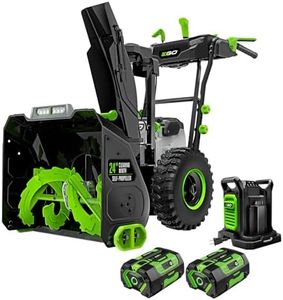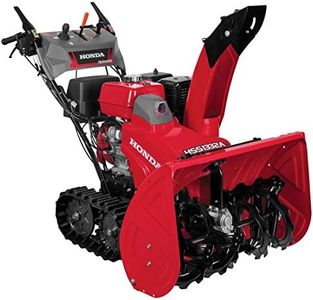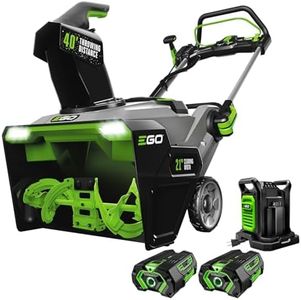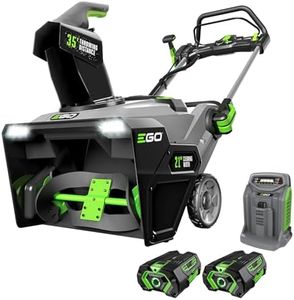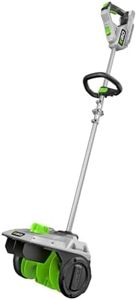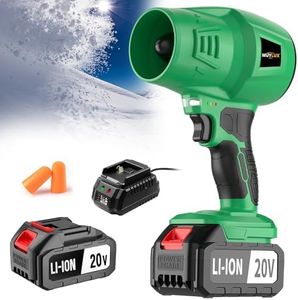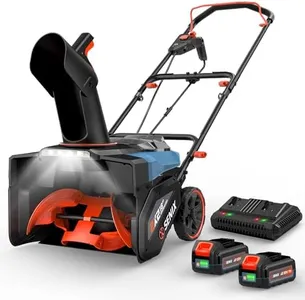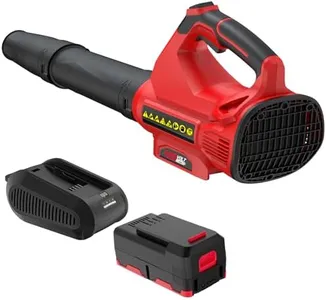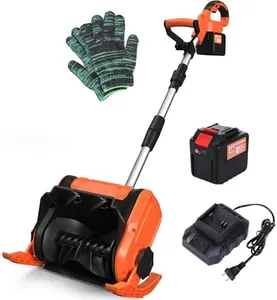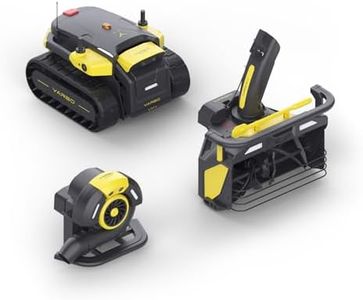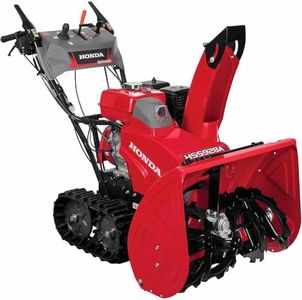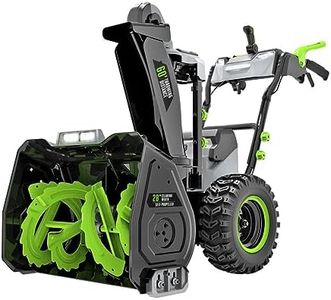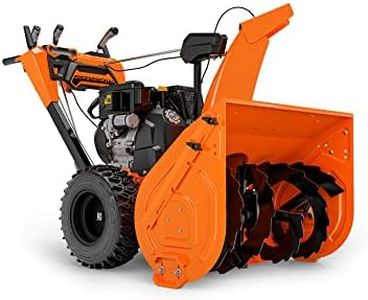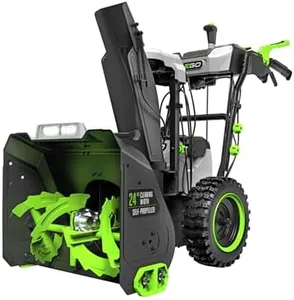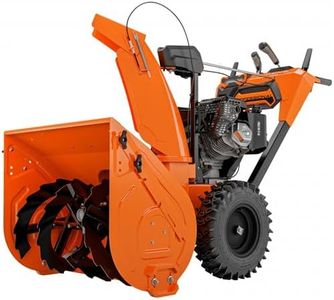10 Best Snow Blowers 2025 in the United States
Our technology thoroughly searches through the online shopping world, reviewing hundreds of sites. We then process and analyze this information, updating in real-time to bring you the latest top-rated products. This way, you always get the best and most current options available.

Our Top Picks
Winner
EGO POWER+ 24" Electric Snow Blower, Cordless Self-Propelled 2-Stage, Includes (2) 56 V 7.5Ah Batteries and Dual Port Charger - SNT2405
Most important from
2096 reviews
The EGO POWER+ 24" Electric Snow Blower is a cordless, self-propelled machine designed to handle moderate snowfall with ease. It offers a solid 24-inch clearing width and can intake snow up to 20 inches high, making it suitable for average driveways and walkways. Powered by two 56V 7.5Ah lithium batteries, it delivers enough power to clear an 18-car driveway with 8 inches of snow on a single charge, thanks to its Peak Power technology that combines both batteries’ output. The 2-stage design and a maximum throw distance of 50 feet help move snow efficiently away from your path.
Its variable speed controls for both the auger and movement, plus forward and reverse directions, enhance maneuverability, though at 210 pounds, it’s on the heavier side compared to gas-powered models. Being battery-powered, it avoids the fuss of gas and emissions and is quieter, which many users appreciate. The weather-resistant construction and 4 LED headlights are practical touches for durability and visibility during early mornings or evenings.
Heavy wet snow or very deep snow might challenge its battery life and power compared to traditional gas snow blowers. This snow blower is an excellent choice for homeowners looking for a cleaner, easier-to-maintain option suited for moderate snowfall areas, while those dealing with very large or heavy snow loads might prefer a gas model for more continuous power.
Most important from
2096 reviews
Honda HSS1332ATD 389cc 32 inch Track Drive Two Stage Snow Blower, Electric Start
Most important from
29 reviews
The Honda HSS1332ATD is a robust two-stage snow blower designed for tackling heavy snowfall with ease. With a clearing width of 32 inches and a powerful 389cc Honda GX OHV engine, it makes quick work of large areas, clearing up to 2,750 pounds of snow per minute. One of its notable strengths is the impressive throw distance of up to 56 feet, which allows you to easily direct snow away from your pathway or driveway. The electric start feature is also a significant advantage, especially in colder weather, making it more convenient to start than traditional pull-start models.
It's important to consider the drawbacks. Weighing in at 250 pounds, the HSS1332ATD is relatively heavy, which can be a challenge for some users when maneuvering it, especially in tighter spaces. The gas-powered engine, while powerful, requires regular maintenance and fuel, which might be less appealing for those who prefer electric models for their ease of use and lower environmental impact.
This snow blower is a great fit for homeowners with large driveways or properties in areas prone to heavy snowfall, but it may be overkill for those with smaller spaces or occasional flurries. Its solid construction and reliability make it a worthy investment for serious snow management, but potential users should weigh the ease of use against the heft and maintenance of a gas engine.
Most important from
29 reviews
EGO Power+ SNT2112 21-Inch 56-Volt Lithium-Ion Cordless Snow Blower with Peak Power and Steel Auger - (2) 5.0Ah Batteries and Dual Port Charger Included
Most important from
2096 reviews
The EGO Power+ SNT2112 is a popular choice in the snow-blower category, particularly for those who prefer a battery-powered option. Its 21-inch clearing width makes it suitable for medium-sized driveways and walkways, while its peak power technology, utilizing two 56V batteries, provides impressive power for snow removal. It can throw snow up to 40 feet, which is quite effective for clearing areas quickly. The steel auger enhances performance, cutting through ice and snow faster than many competitors.
One of the standout features is the high-efficiency brushless motor, which typically means less maintenance and a longer lifespan. Weighing in at 50.6 pounds, it's relatively light for a snow blower, making it easier to maneuver. The convenient handle-mounted chute adjustment and variable speed auger control add to the user-friendly design. Plus, the inclusion of LED headlights is a nice touch for nighttime use.
There are some drawbacks to consider. Being battery-powered, it may not offer the same run time and power as gas options for larger or more challenging jobs, especially if snow depth exceeds the recommended 8 inches. Users may need to manage battery life effectively during extended snowfalls. Additionally, while it’s designed to handle tough conditions, prolonged use in wet, heavy snow may still prove challenging compared to more robust gas-powered models. This snow blower is ideal for homeowners looking for an efficient, quiet, and environmentally friendly option for light to moderate snow removal, particularly for those with smaller driveways or who experience lighter snowfall.
